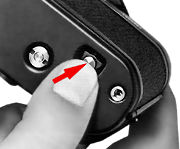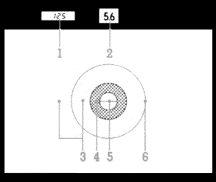 |
|
|
With the split-image
rangefinder, turn the ring until the split image becomes whole. With the microprism
grid, turn the ring until the shimmering image appears sharp. With the matte outer
field, turn the ring until the image appears sharp. The split-image rangefinder works
well for subjects having definite lines or boundaries. The microprism collar is for
fast-moving subjects or ones with indistinct lines, while the matte outer field is
suitable for close-ups. In fast-moving or candid shooting situations, you can measure
or estimate the distance between you and the subject and preset it on the lens using
the distance scale engraved both in feet and meters.
Note: The meter reads the light over the entire focusing screen but is distinctly
biased toward the central 12mm area, also known as Nikon's centre-weighted average
metering method. The Nikon F3 uses a 80/20 distribution ratio, where the 12mm area
dictates 80% of preference for metering sensitivity while the rest of the area only
takes in the balance of 20% into consideration. You can say the F3's metering is
heavy centre-weighted average metering.
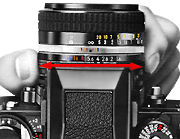 |
|
i.e. Assuming if a shutter speed of 1/500 sec is desired for a given scene, just shift the aperture to a larger number (f1.4, f1.8, f2 etc.) on your lens should affect the metering circuit of the camera to select a higher shutter speed setting to match your selected aperture value, when 1/500 sec is obtained, just shoot. Nevertheless, other than those involved in action photography, it is so much easier and fun to play around with aperture priority AE. i.e. you select the aperture and the camera will provide a matching shutter speed electronically to ensure a proper exposure is formed. Note: Aperture is one of the key elements that affects depth of field - where smaller lens diaphragm opening will increase depth of field (Zone of sharpness) while larger lens opening of the lens diaphragm will decrease the degree of zone sharpness, front to back of your subject of interest.
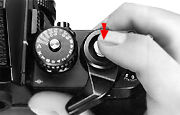 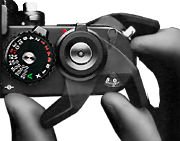 |
|
| 22. Push in the
rewind button After the last exposure has been made, the film advance lever will stop working. You must then rewind the exposed film back into its cartridge. To do this, first turn the camera upside down and depress the rewind button to disengage the film sprocket drive. Without performing this process, the film cannot be rewound. With the motor drive MD-4, the film rewind process is automatic (and high speed of 4.5 sec for 36 exposure film is possible if using Ni-Cd cells) after pushing the two interlocking film rewind slides (Another being a safety slide) on the motor drive to avoid unintentional film rewinding. |
|
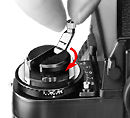 |
|
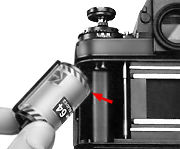 |
|
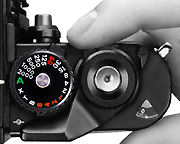 |
|
|
| | | Back to Index of Nikon F3 Models Back to Pictorial History of Nikon SLRs |
|
|||||
|
|||||||
| Back |
Index Page of F3 Camera Manual
| Back |
Main Index
Page of Nikon
F3 models
| About this photographic site | Contributions and Credits |
 |
Home - Photography in Malaysia |
